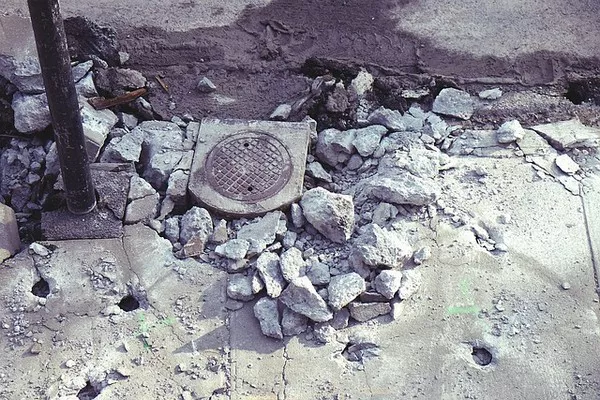Sewage treatment is a crucial process that aims to purify wastewater before its safe release into the environment. Various chemicals are employed during this complex treatment process to effectively remove contaminants and pathogens from the sewage. This article provides a comprehensive overview of the chemicals used in sewage treatment, their roles, and the importance of each chemical in ensuring water quality and environmental protection. Understanding these chemicals is essential for optimizing sewage treatment systems and safeguarding our water resources.
The treatment of sewage plays a vital role in maintaining public health, preserving ecosystems, and protecting water resources. Sewage typically contains a range of organic and inorganic contaminants, pathogens, and other impurities. To purify the wastewater and make it safe for discharge into natural water bodies or for reuse, various chemical treatment methods are employed. These chemicals work synergistically to remove pollutants, neutralize harmful substances, and disinfect the effluent. In this article, we explore the most common chemicals used in sewage treatment and their roles in ensuring efficient and sustainable wastewater management.
1. Coagulants:
Coagulants are chemicals used to destabilize and aggregate colloidal particles present in sewage. The most common coagulants include aluminum sulfate (alum), ferric chloride, and polyaluminum chloride. When added to wastewater, these chemicals neutralize the negative charge on suspended particles, allowing them to come together and form larger flocs. These flocs can then be more easily removed through sedimentation or filtration processes, thereby reducing turbidity and removing certain pollutants.
2. Flocculants:
Flocculants are essential in enhancing the coagulation process. They facilitate the formation of larger and denser flocs, which improves the settling efficiency during sedimentation. Commonly used flocculants include polyacrylamides and polyamines. Their high molecular weight and charge density enable them to bind to the coagulated particles, forming larger aggregates that settle faster. The combined use of coagulants and flocculants significantly improves the removal of suspended solids and organic matter from sewage.
3. pH Adjusting Chemicals:
Maintaining an optimal pH level is crucial in sewage treatment to ensure the effectiveness of various treatment processes. Chemicals like lime (calcium hydroxide) and sulfuric acid are used to adjust the pH of sewage. Lime is commonly used to increase the pH, especially when the wastewater is too acidic, as it aids in the coagulation and precipitation of certain contaminants. On the other hand, sulfuric acid is employed to lower the pH and optimize biological treatment processes, such as activated sludge systems.
4. Disinfectants:
Disinfection is a critical step in sewage treatment to eliminate harmful pathogens and bacteria, preventing waterborne diseases. Chlorine-based compounds, such as chlorine gas, sodium hypochlorite, and calcium hypochlorite, are widely used as disinfectants. These chemicals effectively kill microorganisms by disrupting their cell membranes and denaturing proteins. However, due to the potential formation of harmful disinfection by-products, alternative disinfection methods like ultraviolet (UV) radiation, ozone, and chlorine dioxide are gaining popularity.
5. Activated Carbon:
Activated carbon, often in granular or powdered form, is employed to remove organic compounds, odors, and trace contaminants from treated wastewater. This porous material has a large surface area that adsorbs organic molecules, heavy metals, and certain persistent pollutants. Activated carbon is particularly effective in the final stages of sewage treatment to polish the effluent and ensure that any residual organic matter is adequately removed.
6. Oxidizing Agents:
Oxidizing agents, such as hydrogen peroxide and ozone, are used in advanced oxidation processes (AOPs) to degrade recalcitrant organic pollutants that are not easily removed by conventional treatment methods. AOPs are highly effective in breaking down complex organic compounds into simpler and less toxic substances through oxidation reactions. These processes are becoming increasingly important as the presence of emerging contaminants becomes a growing concern in wastewater treatment.
7. Nutrients:
In some cases, sewage treatment plants add nutrients like nitrogen and phosphorus to the wastewater. These nutrients are essential for promoting the growth of beneficial microorganisms in biological treatment processes, such as activated sludge systems. By encouraging the proliferation of these microorganisms, the treatment plant can more effectively remove organic matter and other pollutants from the wastewater.
Conclusion:
Sewage treatment is a complex and multi-step process that heavily relies on various chemicals to purify wastewater effectively. Coagulants, flocculants, disinfectants, pH adjusting chemicals, activated carbon, oxidizing agents, and nutrients all play critical roles in ensuring the removal of contaminants and the protection of water resources. As environmental concerns and water quality standards continue to evolve, ongoing research and innovation in sewage treatment chemicals will be necessary to develop more efficient and sustainable wastewater management practices. By understanding the functions and importance of these chemicals, we can continue to improve sewage treatment systems and safeguard the health of our communities and ecosystems.

